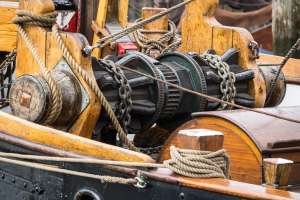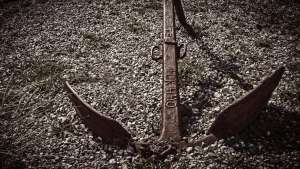Most avid boaters already know that they don’t want to be raising their anchor by hand every time they move their boat and that a windlass boat anchor system is the best way to save their backs from the hard work of lifting such a heavy object. But, they might not know how to choose a windlass system, especially if their current boat already came with one and they’re just now looking to replace it. As such, this guide will provide a few tips for choosing a windlass boat anchor system so that you make the right decision the first time.
Components of a Windlass Boat Anchor System
A windlass anchor system consists of a vertical or horizontal windlass, the boat’s primary anchor, the anchor roller, a rode, a chain locker, and deck hardware such as a cleat or chain stopper. An actual windlass component is a machine that automates the process of letting out or hauling up an anchor or makes it easier to manually pull in or let out an anchor. It acts as a winch in that it winds and unwinds the chain to which the anchor is attached. The anchor is fairly self-explanatory, but it is the weight that is dropped to keep a boat moored to one place in the water. The anchor roller, rode, chain locker, and cleat or chain stopper are components that assist the anchor as it lowers or rises so that it doesn’t move too quickly or damage the boat.
Pulling Power of a Windlass System
There are many opinions on how much pulling power you need in a windlass boat anchor system. This is because some boaters believe you need more power than you actually do. These systems are not intended to raise or lower an anchor when the boat is in motion or when there is significant wind or choppy water. Nor are they intended to pull an anchor out of deep sand (more than three feet). When you choose your windlass system, you should only be worried about having enough power to lift the anchor and ride, but we all know that we can’t always pull or drop anchors in ideal conditions. There are some additional factors to consider.
Most windlass system manufacturers recommend a system that can handle a maximum load of four times the working weight of the anchor, rode, and hardware. So, if you have a 33-foot boat with a 22-pound anchor, and about 40 pounds of rope, chain, and shackle, you’ll need a windlass system that has a load capacity of at least 248 pounds (22 lbs + 40 lbs = 62 lbs, 62 lbs x 4 = 248 lbs). When in doubt, though, choose the windlass with a bit more power than you think you’ll need.
Vertical and Horizontal Windlass Systems
There are two types of windlass anchor systems, which are categorized as vertical and horizontal. The most popular windlass style among boaters is the vertical style because it offers a lower profile and presence on the foredeck. This is because the motor sits below the deck. Vertical windlass systems are considered more secure because the rode makes a 180-degree wrap around the gypsy and feeds through a pipe to the anchor locker. Keep in mind, though, that these systems do require a larger hole for installation and a longer fall for the chain.
Horizontal windlass systems are situated on the deck, which means you only have to drill holes for the chain pipe, thru-bolts, and wires. This makes the installation of horizontal systems easier than vertical systems, but they are more prominent as well. Horizontal windlass anchors are best for small boats because they only need approximately 12 inches of fall for the chain. Be sure to align a horizontal windlass system from side to side since they are unable to accept rodes from off-center angles.
Manual vs. Electric vs. Hydraulic Windlass Systems
Manual windlass systems are the least expensive options available, but you’ll still need to put in some work to raise and lower the anchor. These manual systems are easy to install because they do not require any wiring for electricity or hydraulics. Many boaters start out with manual windlass systems but end up installing an electric system later.
Electric windlass systems are the most popular type of anchor system for boaters. They offer excellent lifting power and make lowering or raising the anchor a simple task that can be accomplished with the push of a button. Electric windlasses are usually fairly compact, so they don’t take up a lot of room either on the deck or below it, but they do require additional installation processes to wire them to the boat’s existing electrical system.
Hydraulic windlass systems provide the most power for anchor lifting, so they are usually exclusive to large boats like yachts and superyachts. They require a central hydraulic system that is separate from the boat’s electrical system to work, which can mean a challenging installation process.
Conclusion
If you’re tired of hauling up your anchor without help, it’s time to consider a windlass boat anchor system. This guide will get you started, but if you’re interested in learning more, visit a boat supplier and speak to a professional.
Read More: Proper Boat and Yacht Maintenance Tips for Beginners.












